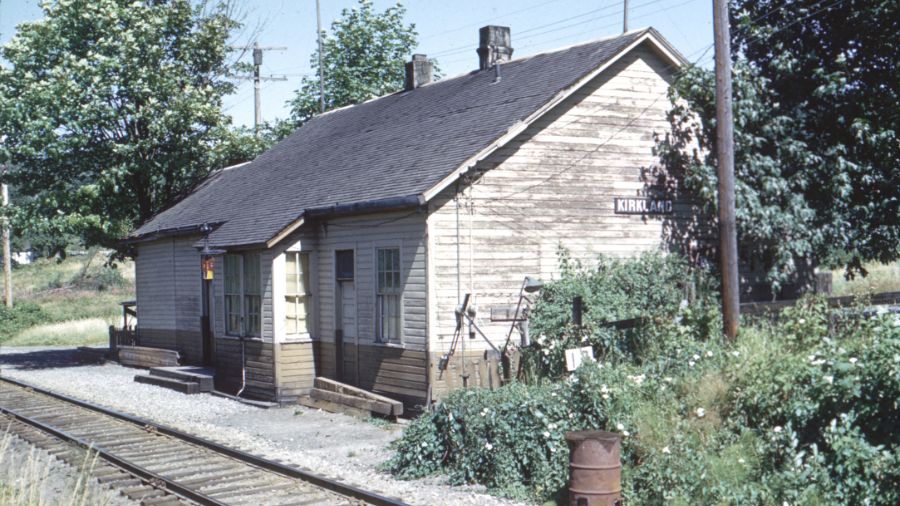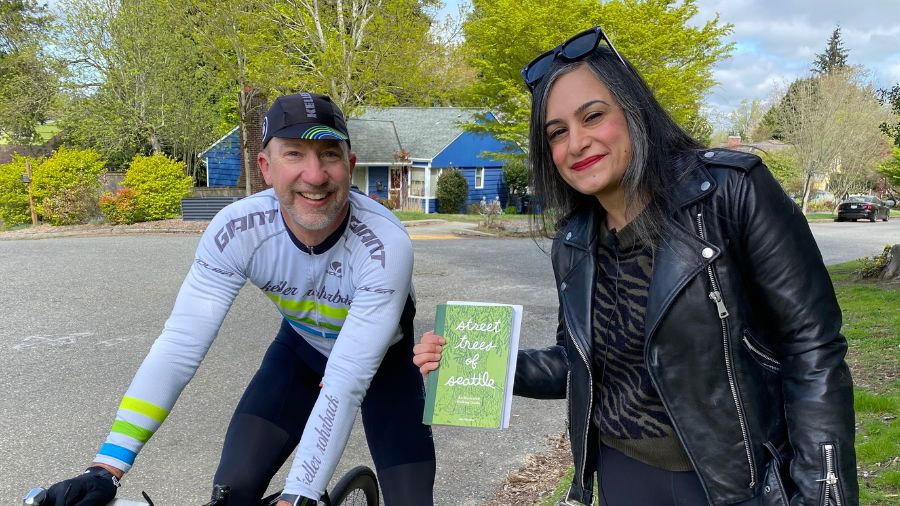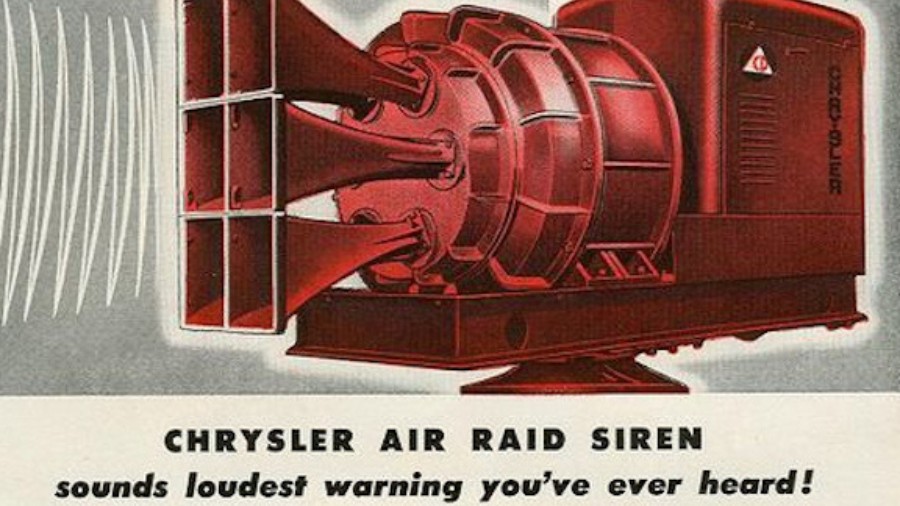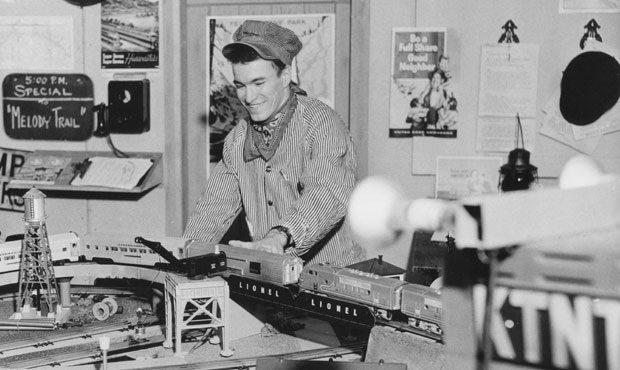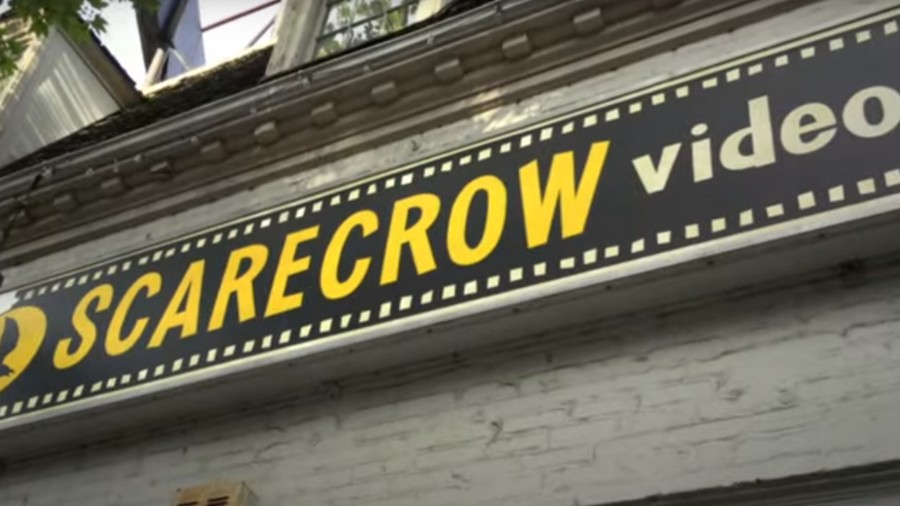‘Boom, there was a community’: Washington’s Jewish future guided by history
May 26, 2022, 3:31 PM | Updated: May 27, 2022, 7:05 am
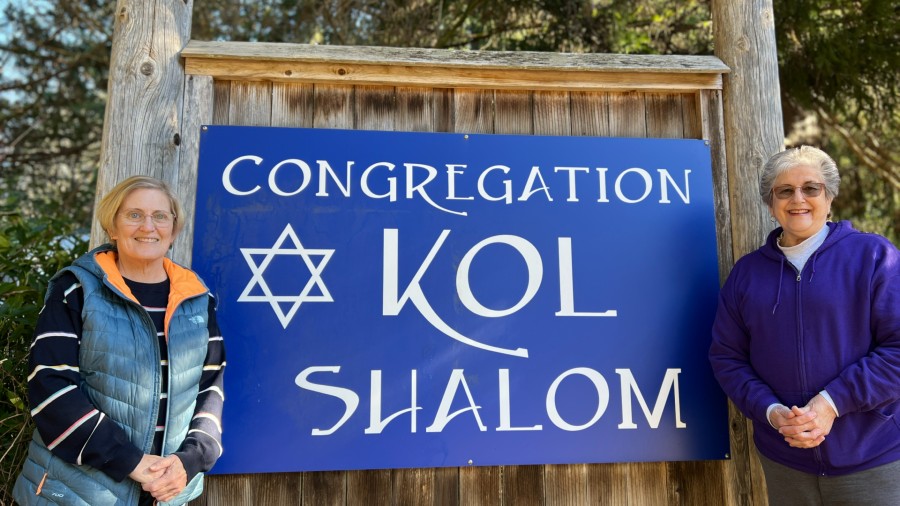
Jani Levy Pauli (left) and Janet Hanrahan have been instrumental in the growth of Congregation Kol Shalom, a synagogue on Bainbridge Island with roots in a 1980s Hanukkah party. The image is featured in the new edition of "Family of Strangers: Building Jewish Communities in Washington State." (Courtesy Jani Levy Pauli, used with permission, via Washington State Jewish Historical Society)
(Courtesy Jani Levy Pauli, used with permission, via Washington State Jewish Historical Society)
A landmark book documenting Jewish history in Washington state has just been updated and reissued in a revised edition by the Washington State Jewish Historical Society.
The first edition of “Family of Strangers” was written by Howard Droker, Jaqueline Williams, and the late Molly Cone and was originally published in 2003. Well-researched and ambitious in scope and scape, the book is several hundred pages in length, and is a comprehensive history of Jewish people and organizations and businesses in what’s now Washington from the 1850s to about 1970.
The Washington State Jewish Historical Society – which was founded in 1968 and incorporated in 1980 – saw a need and an opportunity to publish a new edition in order to correct some minor errors, fill in some blanks and bring the history up to date. In Washington, the past several decades have seen staggering population growth as well as seismic shifts in demographics for the entire state, which means that tens of thousands of Jewish people have moved here during that time. Estimates are that roughly 75,000 Jewish people live in the Evergreen State, and make up about 1% of the population.
For the new section about the recent past – which comes at the end of the new edition as, essentially, a 60-page epilogue – the society recruited a local writer named Stuart Eskenazi. Eskenazi, who for many years was a reporter for the Seattle Times, did not train as a historian. However, like any seasoned journalist, his research skills and storytelling chops translated well for this history project.
Along with updates to the core of the book and the addition of the new epilogue, there’s one significant change visible right on the front cover.
“The original subtitle was ‘Building a Jewish Community in Washington State,’” Eskenazi told KIRO Newsradio earlier this week. “And we changed it to ‘Building Jewish Communities – [plural] – in Washington State’ to basically show that the story over the last 50 years is one of diversity and growth and geographic spread, and with that comes challenges within Jewish organizations and institutions to try to engage with folks.”
Those challenges, says Stuart Eskenazi, include the fact that Jewish communities are not homogenous or monolithic – they are as diverse, if not more diverse, than other groups centered around spiritual, ethnic, and cultural identities in Washington. Life for everyone in 2022 is more complex than it was 100 years ago, and the contained Jewish communities that once revolved around, say, a single synagogue on Yesler Way in Seattle or on South Hill in Spokane are mostly a thing of the past. Meanwhile, the sunsetting of print publications that once kept Jewish people informed has been offset by the rise of social media, and barriers to attending services in person have been removed – or at least altered somewhat – by the pandemic.
Still, Eskenazi says, people still have a desire to congregate around their shared values and elements of history that all Jewish people have in common.
And that’s also one of the reasons the Washington State Jewish Historical Society wanted to update the book – as part of a recent realignment of their mission to reflect the dynamism of Jewish people in the Pacific Northwest.
Executive director Lisa Kranseler says that part of her group’s work is focused on the present and future in order to use history as a means of connecting the dynamic new and emerging Jewish communities in Washington with what and who came before.
“If we’ve learned nothing in the last couple of years, we’ve learned that history is very important, and the history and educating people of what happened in an area that you’ve just moved to is pretty important,” Kranseler told KIRO Newsradio. “Because they are bringing their own ideas here, and that’s fantastic. So has it been done? Has it been tried? Is there someplace where they can they go to do this work?” she continued, reeling off questions she believes history can best answer for people looking to make a new home.
In Washington, Kranseler says “we love [and] we welcome new ideas and creativity all the time, and that’s what we as an organization have adapted to.”
And those new arrivals are often what can shift or expand a particular community in ways that might not have happened without that person – or some related event – serving as a catalyst. In the new section of the book, Stuart Eskenazi shows how the growth of Jewish communities in Washington in the past five decades has sometimes come in surprising ways, in what might be considered surprising places.
One of his favorite stories is about a Jewish woman named Janet Hanrahan, who moved from San Diego to Bainbridge Island in the 1980s.
“And in her mind, she was the only Jewish person living on Bainbridge Island at the time in the 80s,” Eskenazi said. “So she goes over to Temple to Hirsch in Seattle to buy Hanukkah decorations at the gift store . . . and she runs into another shopper there who, guess what, is [also] from Bainbridge Island.”
“So she finds out that, ‘Hey, I’m not the only Jew living on Bainbridge Island,’” Eskenazi continued, “and she ends up having a Hanukkah party at her house. And before she knew it, around 50 people showed up.”
“Boom, there was a community,” Eskenazi said.
That long-ago Hanukkah party, Eskenazi says, eventually led to regular gatherings, the organization of an informal religious school for Jewish kids, and ultimately, the construction of a synagogue and the hiring of a rabbi to serve that Jewish community on Bainbridge.
Similar things happened in other communities, such as Vancouver, Washington, as waves of migration, whether refugees from the former Soviet Union 1980s and 1990s, or more recent new tech workers from all over the world, have continued to draw Jewish people to the Evergreen State.
Stuart Eskenazi says one thing he tried to make clear in his portion of “Family of Strangers” is the difference between the religion known as Judaism – which has different populations like Sephardic and Ashkenazi, and different movements like Orthodox and Reform – and the more encompassing concept of “Jewishness.”
“I tried to avoid the term ‘Judaism’ and stuck with ‘Jewishness’ because you can identify with your Jewishness through faith, through culture, through values, through family connections, through any way that is meaningful to you,” Eskenazi said. “And I don’t think that non-Jews necessarily fully appreciate that being Jewish does not just mean a religion.”
There are dark parts to the recent history, too, including an increase in incidents of anti-Semitism – which isn’t restricted to Washington, unfortunately – and a deadly shooting at the Seattle office of the Jewish Federation in 2006.
But, says Stuart Eskenazi, even those troubling aspects can be harnessed for a practical use of history to achieve a big-picture, universal aim that runs deep throughout this new edition of “Family of Strangers.”
Local music legend Chris Ballew’s bizarre story of surviving the eruption of Mount St. Helens
“To be honest . . . that is really, I think, the underlying reason for this second edition,” Eskenazi said, “to basically talk about who we are, so more people will understand who we are. And when you understand and appreciate people’s history and their struggles and their triumphs, hopefully, you’ll treat them with respect.”
“And love will triumph over hate,” Eskenazi said.
“Family of Strangers: Building Jewish Communities in Washington State” is available online and from booksellers and will be formally celebrated at a gala event sponsored by the Washington State Jewish Historical Society on Wednesday, June 1 at MOHAI.
You can hear Feliks every Wednesday and Friday morning on Seattle’s Morning News, read more from him here, and subscribe to The Resident Historian Podcast here. If you have a story idea or a question about Northwest history, please email Feliks here.


